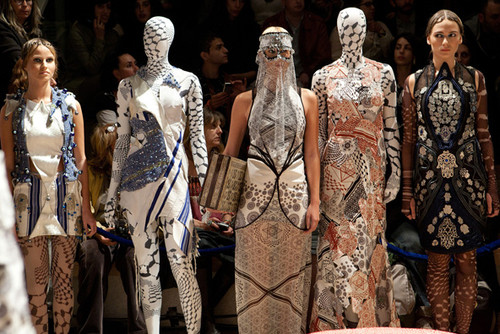In Mozambique, a New Prosperity for Some
Publicado21 Dez 2012

Credit: Benedicte Kurzen for The New York Times
(...)
Para ler o artigo que enquadra o slideshow, basta clicar aqui.

Publicado21 Dez 2012

Credit: Benedicte Kurzen for The New York Times
(...)
Para ler o artigo que enquadra o slideshow, basta clicar aqui.
Publicado9 Dez 2011

© Neta Alonim
On Sunday night, the fashion collective Three as Four opened its highly anticipated exhibition “Insalaam Inshalom” at the Beit Ha’Ir Center for Urban Culture in Tel Aviv, bringing to fruition a project over two years in the making. Covering the walls of the four-story building in fabric printed with their spring collection’s central motifs, which are made of a mix of Muslim and Jewish symbols, the designers Gabi Asfour, Adi Gil and Ange Donhauser invited 10 artists to show works that relate to the project’s central notion: that Judaism and Islam can live side by side. “We’ve accumulated the energy of artists and performers who are like-minded,” Asfour said. “We tried to balance things from all sides, though it’s always difficult.”
Featured in the show are pieces by Yoko Ono, Joseph Dadoune and Jessica Mitrani, to name a few. Installations, video works, textiles and photography are among the works on display throughout the center’s “Insalaam Inshalom”-patterned walls. The performers at Sunday’s event included the Cyprus-born, New York-based director/choreographer Maria Hassabi, who wore cotton overalls from the Three as Four collection. Carrying a rolled-up rug on her slight frame, she slowly made her way down a flight of stairs into a cramped performance area, stopping every few seconds in different sculptural positions. Having arrived, she released the rug behind her back and wrapped herself in it as in a cape. At other moments she lay on it as well as under it as if it were a blanket.
Para continuar a ler o artigo no NYTimes, basta clicar aqui.